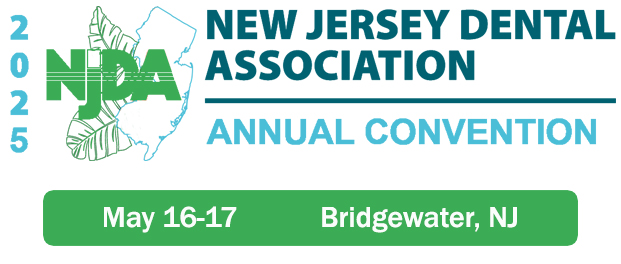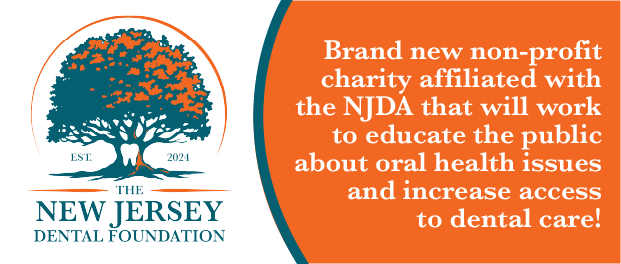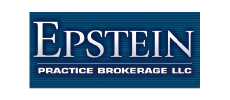Helping Dentists Navigate Their Finances
From tax planning and compliance to practice growth strategies, we understand the challenges and opportunities of healthcare finance. Let us help you on providing quality patient care while we manage the financial health of your practice. Discover how we can support your success throughout your business life cycle.
Perfect Smiles Start With You
Smile Design Boot Camp is an intensive 4-day course that equips dentists with the confidence and knowledge to incorporate techniques for single-arch and full mouth rehabilitation into their practice. Sign up to secure a spot!
Less Than A Month Away!
We are now less than a month away from the start of our two-day convention in Bridgewater… now is the time to pick your CE courses and make your plans to be part of this exciting gathering of the NJ dental community!
RSVP By May 1st
The NDJA Celebration on May 16 is going to be huge! We are taking over the entire 7th floor of the AC Hotel including three bars, outside patio, pool table, DJ and dance floor!
New Jersey Dental Foundation
Take a moment to learn more about NJDA's brand new initiative to help the public learn more and gain access to oral healthcare! Read the mission statement, governance, structure and more.
This is membership your way
Renew today to explore new lower membership costs and customization offerings.
Helping Members Succeed
The New Jersey Dental Association is the voice of the dental profession and a strong proponent of oral health in the state. Members are part of a vibrant community of dentists encompassing 12 local dental societies as well as the American Dental Association. Members engage in educational programs, have access to dentist-centric relationships and tools to navigate the business of dentistry and their careers, as well as benefit from dedicated advocacy that protects the interests of the profession. The organization is run by member-dentists with the support of a team of professionals at NJDA Headquarters. NJDA members never practice alone!
UPCOMING EVENTS
DENTAL NEWS AND NOTES
Protections for Pregnancy
Federal and State Regulations and Protections Regarding Pregnancy
Guidelines for Practice Success | Managing Pregnancy | Business Operations
Various regulations at both the state and federal levels provide workplace protections to pregnant employees and address pregnancy discrimination, workplace accommodations that might be needed during pregnancy, maternity leave, and protections relating to breastfeeding upon returning to work. Since state regulations can – and do – vary, this resource will focus on federal protections and provide only basic suggestions to help you research your state’s specific rules.
Both federal and state laws typically have certain thresholds that must be met for specific statutes to apply; when it comes to workplace matters, that threshold is usually based on the number of employees. Know that thresholds can change over time so be sure you research your state’s current standards rather than relying on word of mouth from a family member, friend or colleague who was pregnant some years ago.
Be aware that the size of your employer’s practice can impact what protections apply to you and can also impact the type and level of maternity/parental benefits offered to employees. Large group practices and those with locations in multiple states may have greater financial resources, making it easier for them to offer more generous benefits. On the other hand, solo or small group practices may be more limited in terms of what they can offer and, because of their size, may be exempt from many federal and state regulations regarding pregnancy protections.
Take time to familiarize yourself with these three federal rules that provide pregnancy protections in the workplace. While this resource focuses on relevant federal requirements, be aware that several states have enacted additional protections for maternity and parenting leave and, in some cases, have lowered the threshold for the application of protections to apply to businesses with fewer than fifteen employees.
-
The U.S. Equal Employment Opportunity Commission’s Pregnancy Discrimination Act (PDA)
The PDA prohibits employers with a minimum of 15 employees from: refusing to hire a woman because of pregnancy; firing or forcing a woman to leave her position because of pregnancy; taking away certain benefits – such as credit for previous years worked, accrued retirement benefits or seniority because of maternity leave – or firing or refusing to hire a woman because she opted to terminate a pregnancy. The Act also mandates that pregnant women be eligible for temporary job reassignment to easier duties if pregnancy makes her unable to perform her current duties.
-
The U.S. Department of Labor’s Family and Medical Leave Act (FMLA)
The FMLA applies to workplaces with a minimum of 50 employees and ensures that employees on a medical leave, including maternity leave, have the right to take up to 12 weeks of unpaid leave and be able to return to the same job or one that is similar to the one they had before beginning the leave.
-
The U.S. Department of Labor’s Wages and the Fair Labor Standards Act (FLSA)
- cannot be a bathroom
- must be shielded from view
- must be free from intrusion from coworkers and the public
The FLSA contains provisions requiring employers to provide reasonable break time for employees to express breast milk as needed for a nursing child for up to one year after the child's birth. Employers also must provide an appropriate place for employees to express milk. That location:
Additional information on each of these can be found in other articles within this resource.
Resources
- The U.S. Equal Employment Opportunity Commission’s Pregnancy Discrimination Act (PDA)
- The U.S. Department of Labor’s Family and Medical Leave Act (FMLA)
- The U.S. Department of Labor’s Wages and the Fair Labor Standards Act (FLSA)
- The U.S. Department of Labor's Break Time for Nursing Mothers
Contact Us
Phone: 732-821-9400 or dial the Staff Directly
Fax: 732-821-1082 | Email: info@njda.org | Follow us @NJDentalAssoc
One Dental Plaza, North Brunswick, NJ 08902













